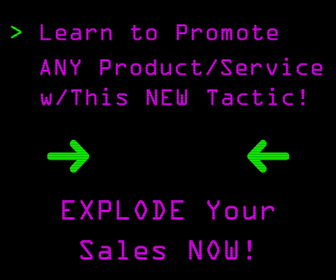 Today, innovation is all around us. From exciting new technologies to new startup business models, the very idea of change is taking off just as fast as the businesses that embrace it. In the U.S. alone, 63 percent of companies have hired chief innovation officers, and over 90 percent of companies are using new technologies to help them implement the innovation process. During our free webinar training, we often brainstorm how to improve an online business and how to make creative ideas turn into a profitable business. Don’t resist change but instead allow it to change you and your company for the better. Keep reading to learn how to embrace creativity and use it to your advantage.
Today, innovation is all around us. From exciting new technologies to new startup business models, the very idea of change is taking off just as fast as the businesses that embrace it. In the U.S. alone, 63 percent of companies have hired chief innovation officers, and over 90 percent of companies are using new technologies to help them implement the innovation process. During our free webinar training, we often brainstorm how to improve an online business and how to make creative ideas turn into a profitable business. Don’t resist change but instead allow it to change you and your company for the better. Keep reading to learn how to embrace creativity and use it to your advantage.
To start being creative, Entrepreneur recommends shaking things up, thinking outside the box, and spend fifteen percent of your work time thinking of ways to improve your company.
Fifteen percent time
Fifteen percent time is a term invented by William McKnight at the Minnesota Mining and Manufacturing Company, or 3M, as it’s known today. This policy allowed employees to spend 15 percent of their paid work time daydreaming, doodling or experimenting with ideas that didn’t necessarily have to do with their work at the company.
As McKnight knew and many other business leaders have since discovered, this kind of daydreaming is the genesis of invention and fosters passion for one’s work.
Shake things up
There’s no better way to get your employees thinking outside the box than to assign them new and exciting projects outside the scope of their daily activities. While some employees may initially react with a fear of failure, ultimately they will be engaged by the chance to try something new in your supportive “no idea is a bad idea” work environment.
Don’t put yourself in a box
The most successfully innovative companies know that they are more than just their products and services. Instead of only defining your company by what it sells, identify your assets and strategic skills. As an added bonus, your employees will be inspired to feel that they are more than just their job roles, as well.
Emergenetics blog really hits the nail on the head by revealing that creativity is all about taking chances and not sticking to one approach. Specifically, he mentions a leader named Sir Ken Robinson, Ph.D., who has given TED talks on the topic. Sometimes it pays to think outside the box!
Creativity is about taking a chance and not being frightened if the results don’t turn out as expected.
The issue, as Robinson makes clear, is that unfortunately it isn’t easy to take a chance on creativity—everything we learn is based on hierarchy. Think to your schooling…the emphasis is always first with Mathematics, Languages, and Humanities. Where do the Arts come in? How many articles do we read about arts, music, and gym classes being cut?
To reframe it into a business context, the easy answer is that this subject matter isn’t contributing to the bottom line so to speak. But, as Robinson points out, and we can all anecdotally express, in reality, creativity isn’t boxed into one discipline or one approach. That’s precisely WHY it’s so valuable to cultivate!
Creativity can help a business get past a lot of hurdles, and in particular, Big Think remarks that an author named Jennifer Mueller claims that everyone claims they are creative when in fact they aren't creative enough.
In her book, Creative Change: Why We Resist It… How We Can Embrace It, social psychologist Jennifer Mueller notices that everyone pays lip service to creativity, yet few people actually have faith in it. Its power resides more as an invocation than in its implementation. While many people like to believe they’re all about creative solutions, they’ll usually join the status quo out of fear of truly thinking differently.
Mueller’s focus in this short book is executives and business owners, and it grew out of a 2010 paper that she says has been downloaded over 65,000 times. The book itself is really a long essay, repetitive at times to fulfill a word count, though her point is substantial: we’re biased against creativity.
Toeing the tech line, Mueller constantly asks her clients to “self-disrupt.” She uses two mindsets to argue her point: how/best, leaders that recognize the most feasible option now and are intolerant of uncertainty, and why/potential, leaders that focus on potential future value and are more open to an uncertain future.
Mueller presents a four-step protocol for self-disrupting, throwing in a fifth “lifeline” option should the prior steps fail. While her book is predominantly written for business owners and executives, her general guidelines can be parsed for personal use as the status quo affects us all.
Big Think covers all four steps, and here is one of them that asks business owners to work on identifying whether they are evaluating whether their ideas are creative enough.
Identify whether you are evaluating familiar ideas, creative ideas, or both.
Mueller recommends a take on the Wisdom of Crowds (WOC) approach by assigning ideas with a creative value between 1-4, with the higher end being more creative. Employ at least 20 independent judges to evaluate each idea to decide if they are truly radical or fall in line with the status quo. Each idea should be rated on both creativity and quality—being creative does not mean it will be quality. You want to end up with two piles of high-quality ideas: low creativity and high creativity.
If you end up with only one pile, proceed to step two. But if your piles are split, Mueller suggests investigating the high-creativity ideas first, while everyone is fresh. Your team might move on to more familiar ground, but she advises to reserve judgment until the end of the session, “to let their thoughts incubate.”
How does creativity show up in your business? Susannah Conway reveals what she does to get the creative juices flowing…
When it comes to my business, I love inviting in my inner muse to play. I literally surround myself with my Right-Brain Business Plan: my big-vision collage hangs from my bulletin board, my perfect customer profiles are on display in a cool carousel, and the wall behind me is covered with my sticky note project plan to map out my year. (Oh and of course, my kindergarten art class pic is up in my office, too). These visuals keep me inspired and feed my creative spirit. I’m so grateful that I’ve embraced creativity in my business because it gives me permission to be ME, it helps me innovative and, it helps me savor the fruits of my labor.
Whether you’re working independently or as part of a group, Harvard Business Review recommends encouraging and enabling collaboration. If you run your own online business, you can collaborate with others on Facebook groups or LinkedIn, for example. The idea is to take advantage of technology and brainstorm with other people on how to solve a problem.
As leaders look beyond the top ranks for creative direction, they must combat what Diego Rodriguez, a partner at IDEO and the leader of its Palo Alto, California, office, calls the “lone inventor myth.” Though past breakthroughs sometimes have come from a single genius, the reality today is that most innovations draw on many contributions. “Consider the examples of InnoCentive, of Mozilla, of Wikipedia,” Rodriguez said. “All are contexts that bring in lots of contributors. And the fundamental structure of such networked organizations is not centralized and top-down. People don’t do what they do because someone told them to do it. Contributing to an interdependent network is its own reward.” Rodriguez argued forcefully that, even in today’s highly networked world, organizations fail to take full advantage of internet technologies to tap into the creativity of many smart people working on the same problem. (For Scott Cook’s thinking about tapping the input of people outside the organization, see “The Contribution Revolution,” Reprint R0810C.)
A study by Victor Seidel of the University of Oxford’s Saïd Business School identified one practice that leaders would do well to promote: the use of “coordination totems” in the conceptualization of new products. Seidel looked at the problem of how to achieve collaboration on radical innovations; when no obvious antecedent exists, it’s difficult for a vision to be shared. His analysis of six award-winning products (from three quite different industries) showed how product development teams used not only prototypes but also metaphors, analogies, and stories to coordinate their thinking.
Creativity is all around us, and when you’re starting an online business it’s always important to come up with new ideas. Even if your business starts to take off there are always new ways to grow. Don’t be afraid of creativity because it can pave the way to new ideas and cultivating a profitable business. Brainstorm with us and learn how small business owners are being creative by joining us for a free webinar training.
Sources: Big Think, Susannah Conway, Emergenetics, Entrepreneur, Harvard Business Review
CHALLENGE Yourself to Profit!
Free Download: Build Your Profit-Generating Online Business With This Free Blueprint
Sign Up, follow the easy steps and You'll get the tactics, strategies & techniques needed to create your online profit stream. It's free!



